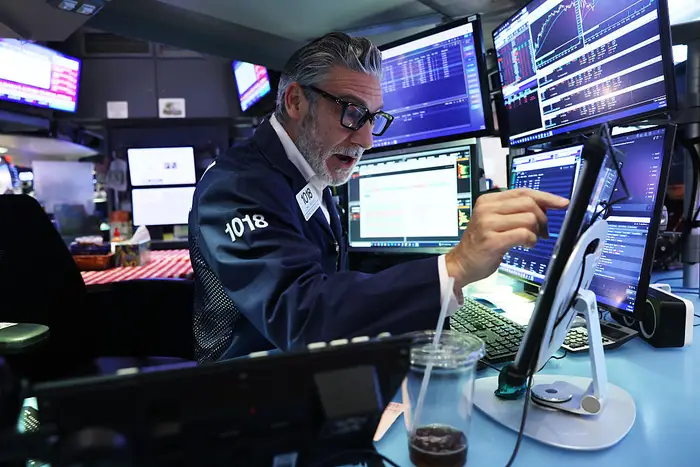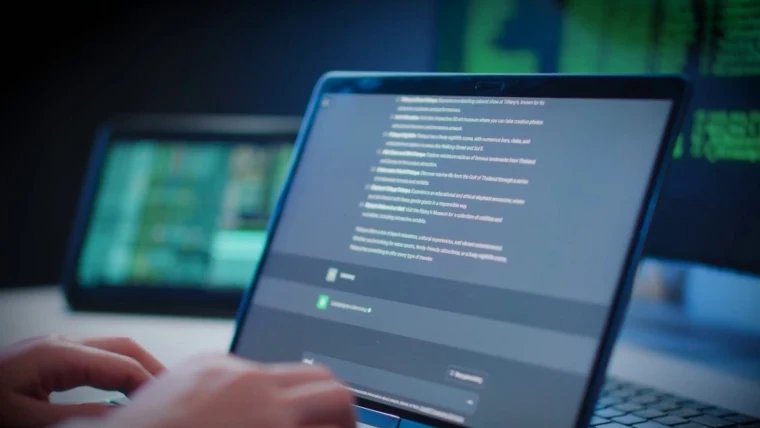After an April stock market rout sparked by President Trump’s steep tariffs on most of the world, I made a bet with a regular Trendlines reader and frequent critic.
John G. was confident investors would shrug off the tariffs and push stocks higher. I expected more losses amid another burst of inflation and a cooling economy.
Fast forward, and my wager is in the red.
As of Friday, the Standard & Poor’s 500 index was up 10 percent from Jan. 17, the last trading day before Trump’s inauguration. If the benchmark stays in the black through year-end, I owe John a steak dinner at Abe & Louie’s.
But I’m not conceding. The rally that powered stocks higher since April is sputtering. The S&P 500 is down 4.2 percent from its Oct. 28 peak through Friday. The index was up more than 1 percent late Monday morning as tech stocks rebounded.
The latest: Investors aren’t worried about tariffs; John was right that they would move on.
Instead, they’re second-guessing the euphoria around all things artificial intelligence, from stratospheric tech company valuations to the sustainability of massive spending on chips, data centers, and related AI infrastructure that has kept the otherwise sluggish US economy moving forward.
Adding to the jitters: bitcoin’s crash and uncertainty over the path of interest rates.
The VIX, Wall Street’s so-called fear index, underscores the mood shift. The gauge has been ticking higher since August and is now above its level from before the “Liberation Day” tariffs were announced on April 2.
Ghost of the dot-com bust: Any conversation these days about AI inevitably circles back to the internet bubble of the late 1990s.
Then, the World Wide Web promised to disrupt the way we shopped, worked, were entertained, and socialized. Startups with untested business models and scant revenues became stock market darlings — until they ran out of money long before the internet delivered its real economic and social transformation.
Today, companies such as OpenAI and Anthropic face the same daunting challenge: Generating profits that justify their towering private valuations — roughly $500 billion for OpenAI and $350 billion for Anthropic — and the hundreds of billions they and other startups are pouring into the quest for artificial general intelligence, the holy grail of a system that can match or surpass human capabilities.
And the giants of the tech world — Alphabet, Amazon, Apple, Meta, Microsoft, and Nvidia — are spending heavily to infuse new and existing products with AI. Together, they now account for roughly one-third of the S&P 500’s market value.
But as investors question when AI will pay off, AI stocks have sagged.
Bitcoin blowout: As the stock market wobbles, investors are pulling back from riskier investments, including crypto assets.
The value of bitcoin, the largest cryptocurrency has declined about 30 percent since reaching an all-time high of more than $125,000 in early October.
Bitcoin hit a record amid expectations of more Federal Reserve rate cuts, which would make bitcoin look more attractive than interest-paying bonds.
The central bank did cut again in late October, but since then a split among officials has raised doubts about the timeline for additional easing.
The crypto crash accelerated as investors sold their holdings to meet margin calls — demands from exchanges and brokers to repay the loans they used to buy bitcoin. Some institutional investors are said to be bailing out to avoid turning paper gains into losses as prices fall.
Bitcoin resumed its slide on Monday after climbing 4.3 percent on Sunday.
Fed’s conundrum: The central bank is caught between a rock and a hard place as it pursues its mandate to maximize employment while keeping inflation steady.
As the job market cools, policymakers would normally lower rates to spur spending, investment, and hiring. But that stimulus could heat up inflation, which has been running above the Fed’s 2 percent longer-term target since March 2021.
The rate-setting committee is split between those who see inflation as the greater risk and those who believe rising unemployment is the bigger problem.
“We’re in a complex period” for setting monetary policy, Susan Collins, president of the Federal Reserve Bank of Boston, told reporters on Saturday at a research conference at the bank.
Collins, who will participate in the Fed’s next meeting on Dec. 9-10, has said she’s leaning toward voting to hold rates steady, though she hasn’t made a final decision.
“I do see reasons to be hesitant” over cutting rates next month, she said.
Last week, investors saw a 42 percent chance that the Fed will lower rates another quarter-point next month, according to CME FedWatch. That was down from 92 percent a month ago. The latest odds (as of Monday afternoon) are about 80 percent. Such swings highlight the current economic uncertainty.
Final thought: So where does that leave my bet with John?
More likely than not, I’ll be buying his steak. But with 26 trading days left in the year, the outcome — and the dinner bill — isn’t settled yet.
“That doesn’t exist.”
— Office of Personnel Management Director Scott Kupor, when asked by Reuters about the status of the Department of Government Efficiency, a.k.a. DOGE.
Fixing a hole: President Trump is set to propose a framework that extends Obamacare tax credits but eliminates so-called zero-premium subsidies.
Conservative press: The owner of the Daily Mail has agreed to buy rival newspaper The Telegraph in a $650 million deal that would create one of the most powerful right-leaning media groups in Britain.
🧑🎓 Higher Education
Piling on: Students are petitioning Harvard University to revoke Larry Summers’ tenure in the wake of revelations about his relationship with convicted sex offender Jeffrey Epstein.
🏘️ Housing & Development
Start: Construction could resume in 2026 at the former South Weymouth Naval Air Station after the Massachusetts Legislature approved updated zoning and development guidelines for the sprawling 1,400-acre base property.
Stop: Developer IQHQ says it will put a $1 billion project over the Mass Pike near Fenway Park on hold until the real estate market for life science improves.
> $1 trillion
— The loss in the value of crypto tokens since their October peak, according to Deutsche Bank.
It was a wicked good opening for the latest production from the Wizard of Oz Cinematic Universe.
“Wicked: For Good” brought in $150 million domestically during its first weekend in theaters and $226 million worldwide. According to Variety:
The film set a record for Broadway adaptations, shattering the debut of 2024’s “Wicked,” which previously held the benchmark with $112.5 million over the same pre-Thanksgiving frame. These ticket sales also rank as the year’s second-biggest opening behind April’s “A Minecraft Movie” ($162 million) but above May’s “Lilo & Stitch” remake ($146 million).
The film scored big despite getting some bad reviews: “‘Wicked: For Good’ is wicked not great” was the headline on Odie Henderson’s two-star pan in the Globe. The sequel has a 70 percent rating on Rotten Tomatoes, compared with 88 percent for the original.
But fans are over the rainbow, giving the second installment a 95 percent rating, the same as part one. And for Hollywood, that’s what really matters.
📆 On this date in 1874, Joseph Glidden received a patent for his version of barbed wire, which became the most commonly used type in the US.
🦃 Thanks for reading. Trendlines will be back next Monday. Have a great Thanksgiving.
✍🏼 If someone sent you this newsletter, you can sign up for your own copy.
Larry Edelman can be reached at larry.edelman@globe.com.













